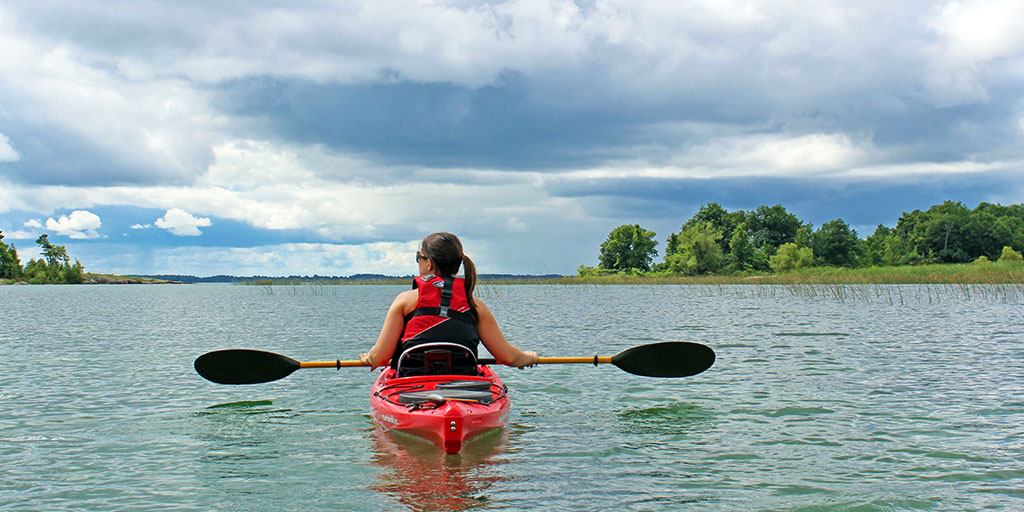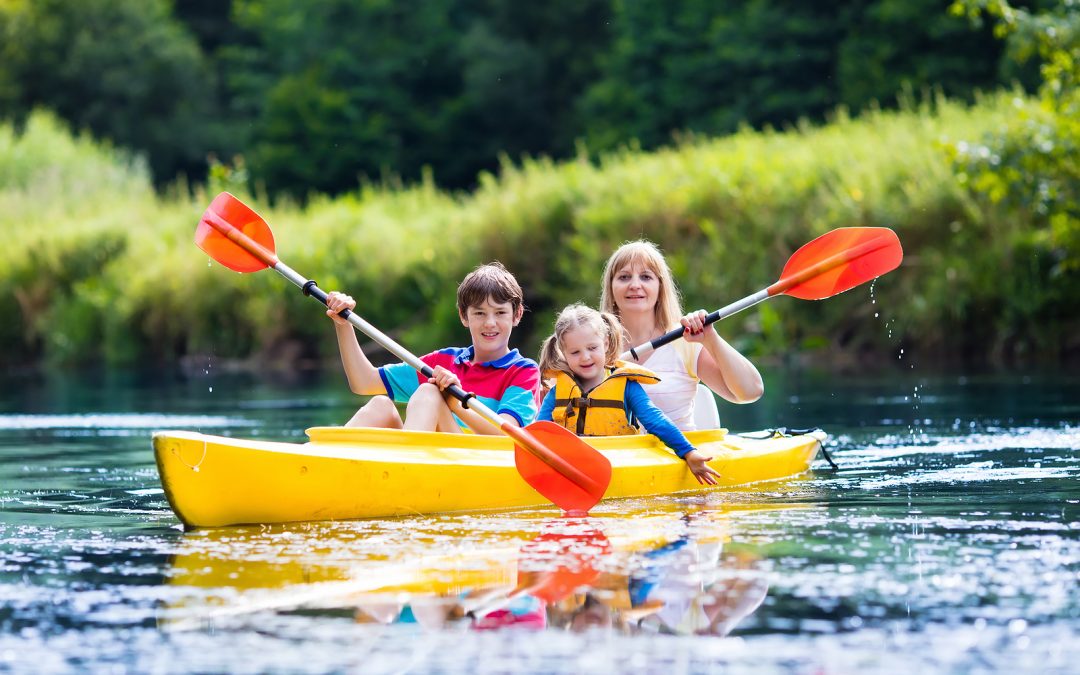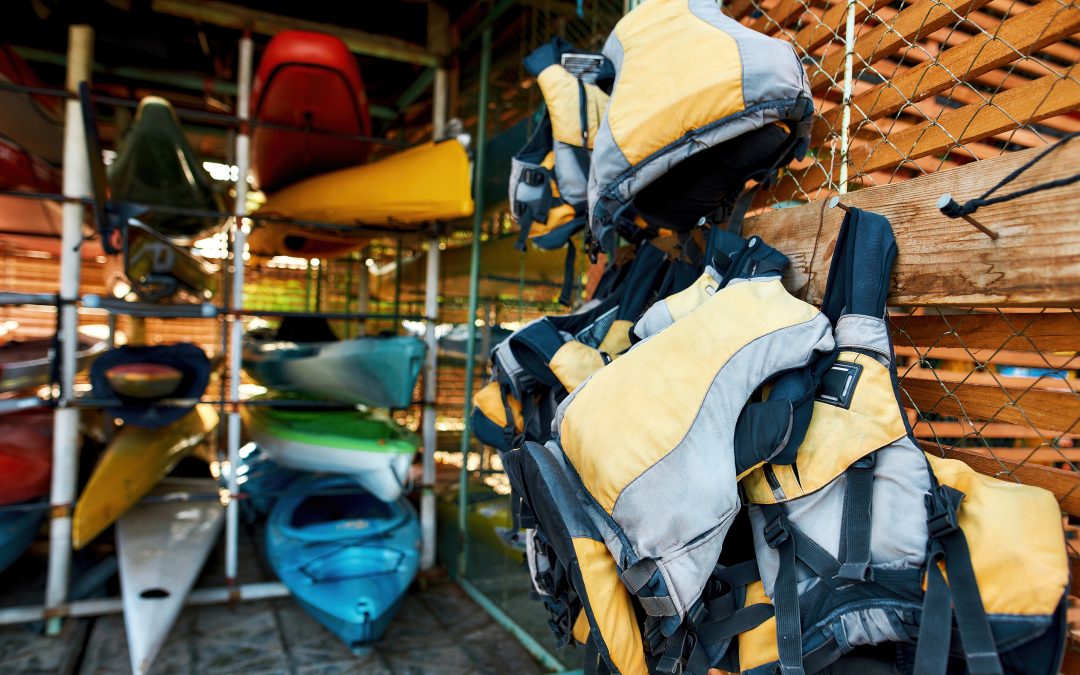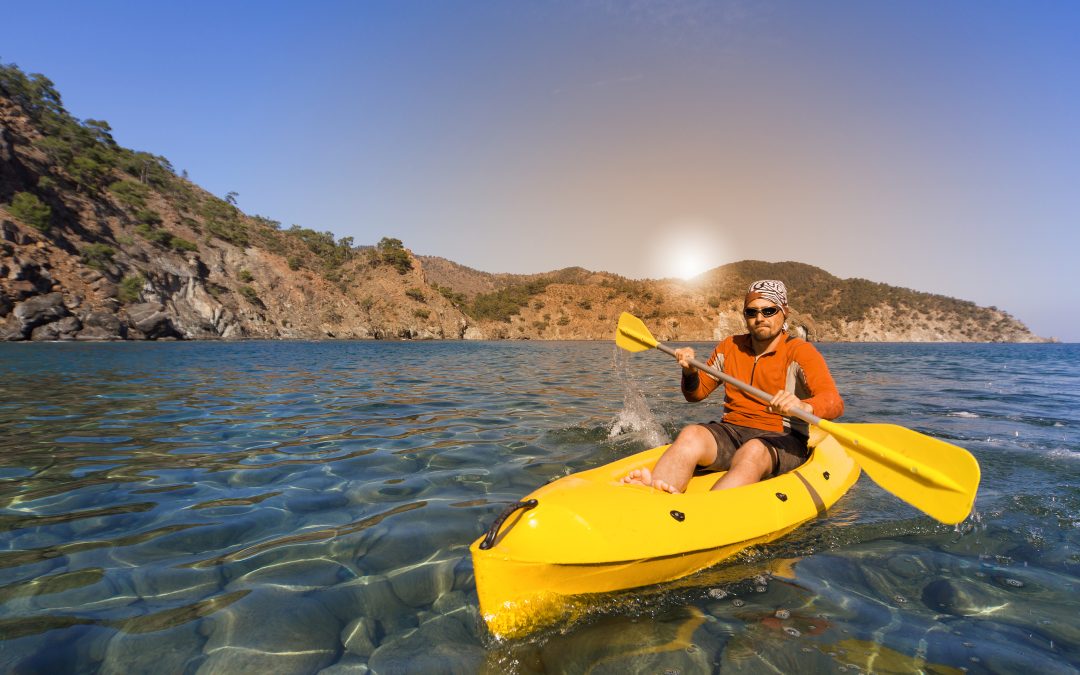A Complete Guide to Kayak Camping: Tips and Tricks for a Memorable Adventure
Kayak camping is a unique and exciting way to experience the great outdoors. Combining the thrill of kayaking with the peacefulness of camping, it offers a chance to explore remote areas that are otherwise inaccessible. However, planning a kayak camping trip can be overwhelming, especially for beginners. That’s where a complete guide to kayak camping comes in handy.
This guide provides everything you need to know about kayak camping, from understanding the basics to choosing the right gear and planning your trip. It covers essential topics such as kayak camping skills, leaves no trace of principles, and the pros and cons of kayak camping. Whether you’re a seasoned kayaker or a complete beginner, this guide will help you prepare for your next adventure on the water.
Key Takeaways
- Understanding the basics of kayak camping is essential for a successful trip.
- Choosing the right kayak and essential gear is crucial for comfort and safety.
- Proper planning and knowledge of leaving no trace principles are necessary to minimize environmental impact.
Understanding Kayak Camping
What is Kayak Camping?
Kayak camping is a unique and exciting way to explore the great outdoors. It involves using a kayak to travel to a campsite, where you can set up camp and spend the night. This type of camping is perfect for those who love the water and want to experience nature differently.
Kayak camping requires some basic kayaking skills, such as paddling and steering. Choosing a kayak that is suitable for camping and can hold all of your gear is important. Some kayaks are specifically designed for camping and have extra storage space for gear and supplies.
Benefits of Kayak Camping
Kayak camping offers several benefits that traditional camping does not. First, it allows you to access remote and secluded areas not accessible by foot or car. This means you can experience nature more intimately and peacefully.
Second, kayak camping is a great way to exercise and stay active. Paddling a kayak requires upper body strength and can be a great workout. Additionally, setting up camp and carrying gear can provide good physical activity.
Finally, kayak camping is a great way to disconnect from technology and enjoy the simplicity of nature. Without the distractions of phones and computers, you can fully immerse yourself in the natural world and appreciate its beauty.
Kayak camping is a unique and rewarding way to experience the outdoors. With some basic skills and equipment, anyone can enjoy this exciting activity.
Choosing the Right Kayak
When it comes to kayak camping, choosing the right kayak is essential. There are several factors to consider when selecting a kayak, including the type of water you will be paddling on and the length of your trip. This section will explore the different types of kayaks and the key features to consider when choosing the right kayak for your next kayak camping trip.
Types of Kayaks
There are several types of kayaks to choose from, including recreational kayaks, touring kayaks, and sea kayaks. Recreational kayaks are ideal for calm, flat water-like lakes and slow-moving rivers. They are typically shorter and wider, making them more stable but slower. Touring kayaks are designed for longer trips and are more efficient in the water. They are longer and narrower, making them faster but less stable. Sea kayaks are designed for open water and are longer and narrower than touring kayaks. They are designed to handle rougher water and are more maneuverable in these conditions.
Key Features to Consider
When choosing the right kayak for your kayak camping trip, there are several key features to consider. These features include:
- Length: Longer kayaks are faster and more efficient in the water but less maneuverable. Shorter kayaks are more stable but slower.
- Width: Wider kayaks are more stable but slower. Narrower kayaks are faster but less stable.
- Cockpit size: The cockpit size is important for comfort and ease of entry and exit. A larger cockpit is more comfortable but less secure. A smaller cockpit is more secure but less comfortable.
- Storage space: The amount of storage space you need will depend on the length of your trip and the gear you need to bring. Look for kayaks with ample storage space to accommodate all of your gear.
- Weight capacity: The kayak’s weight capacity is important to ensure that you can safely carry all your gear and supplies.
- Material: Kayaks can be made from various materials, including plastic, fiberglass, and carbon fiber. Plastic kayaks are the most affordable but are also the heaviest. Fiberglass and carbon fiber kayaks are lighter and more efficient in the water but are also more expensive.
Considering these key features, you can confidently choose the right kayak for your next kayak camping trip.
Essential Kayak Camping Gear
When planning a kayak camping trip, having the right gear is important to ensure a safe and enjoyable experience. The following sections outline the essential gear for a successful kayak camping trip.
Paddling Gear
The first and most important piece of gear for a kayak camping trip is the kayak itself. A kayak designed for camping should be spacious enough to hold all necessary gear yet still be lightweight and easy to maneuver.
Other important paddling gear includes an emergency paddle in case the primary paddle is lost or damaged, a bilge pump to remove any water that enters the kayak, and a spray skirt to keep water out of the cockpit.
Camping Equipment
In addition to paddling gear, camping equipment is essential for a successful kayak camping trip. A multi-purpose tent that can be easily set up and taken down is ideal, as well as a sleeping bag and pad for a comfortable night’s rest. A waterproof headlamp is also important for navigating around camp in the dark.
Dry packs or bags are necessary to keep gear dry and organized during the trip. A camp chair is also a nice addition to relaxing around the campfire.
Safety Gear
Safety gear may be the most important to bring on a kayak camping trip. A personal flotation device (PFD) is essential and should always be worn while on the water. A paddling knife, GPS, maps, compass, and whistle are also important for navigation and emergencies.
A first aid kit and repair kit for the kayak is also necessary in case of any accidents or damage to the kayak. Being prepared for any situation while on a kayak camping trip is important.
Overall, having the right gear for a kayak camping trip is crucial for a safe and enjoyable experience. By bringing the essential paddling gear, camping equipment, and safety gear, campers can relax and enjoy the beauty of nature while on the water.
Planning Your Kayak Camping Trip
When planning a kayak camping trip, several important factors must be considered. This section will cover the key aspects of planning a successful kayak camping trip, including selecting a destination, checking weather and water conditions, and creating a trip itinerary.
Selecting a Destination
The first step in planning a kayak camping trip is to select a destination. When choosing a destination, it is important to consider factors such as difficulty level, distance from your starting point, and availability of campsites.
One popular destination for kayak camping is Minnesota’s Boundary Waters Canoe Area Wilderness, which offers over 1,000 lakes and streams to explore. Popular destinations include the Colorado River, the Florida Keys, and the Great Lakes.
When selecting a destination, it is important to research the area thoroughly to ensure that it meets your needs and expectations. Consider factors such as the availability of water sources, the level of solitude, and any applicable regulations or restrictions.
Checking Weather and Water Conditions
Before embarking on a kayak camping trip, it is important to check the weather and water conditions. This will help you prepare for any potential hazards and ensure you have the appropriate gear and supplies.
Check the weather forecast for the area you will be visiting, and be prepared for changes in weather conditions. It is also important to check water levels and currents, as these can affect your ability to navigate and camp safely.
Creating a Trip Itinerary
Once you have selected a destination and checked the weather and water conditions, it is time to create a trip itinerary. This should include a detailed plan for each day of your trip, including your planned route, campsites, and any activities or attractions you plan to visit.
When creating your itinerary, leave room for flexibility and unexpected changes. It is also important to consider your experience level and physical ability and plan your trip accordingly.
By carefully planning your kayak camping trip, you can ensure a safe and enjoyable experience in the great outdoors.
Kayak Camping Skills
Kayak camping is a unique and rewarding way to explore the great outdoors. However, it requires specific skills to ensure a safe and enjoyable trip. This section will cover the essential kayak camping skills that every paddler should know.
Paddling Techniques
Paddling is the foundation of any kayak camping trip. Proper technique can distinguish between an enjoyable paddle and an exhausting one. Here are a few tips to improve your paddling technique:
- Use a relaxed grip on the paddle, and keep your arms straight.
- Use your torso to rotate your body and paddle rather than just your arms.
- Keep your paddle close to your kayak to maintain stability.
- Use a low-angle stroke to conserve energy on long paddles.
Camping Skills
Camping is an essential part of any kayak camping trip. Here are a few camping skills that every paddler should know:
- Choose a campsite at least 200 feet away from water sources and trails.
- Use a tent that is appropriate for the weather conditions and terrain.
- Use a sleeping pad and sleeping bag to stay warm and comfortable.
- Store food and other scented items in bear-resistant containers or hang them from a tree branch.
Emergency Preparedness
Being prepared for emergencies is crucial when kayak camping. Here are a few tips to ensure you are ready for any situation:
- Bring a first aid kit and know how to use it.
- Learn how to perform self-rescue techniques, such as the Eskimo roll.
- Bring a spare paddle and know how to use it.
- Check the weather forecast before your trip and be prepared for weather changes.
By mastering these essential kayak camping skills, paddlers can enjoy a safe and enjoyable trip in the great outdoors.
Benefits of Going Kayak Camping
Kayak camping offers a unique and exciting way to explore the great outdoors. Here are some of the benefits of going on a kayak camping trip:
Access to Remote Locations
One of the biggest advantages of kayak camping is the ability to access remote locations that are not accessible by foot or by larger boats. Kayaks are lightweight and maneuverable, which makes them perfect for exploring narrow waterways, shallow streams, and secluded coves. This allows campers to experience nature in a way that is not possible with other modes of transportation.
Affordable and Low-Impact
Kayak camping is an affordable way to enjoy the great outdoors. Unlike RV camping or staying in a cabin, kayak camping requires minimal gear and equipment. This makes it a great option for those on a budget. Additionally, kayaks have a low environmental impact, meaning campers can enjoy nature without damaging it.
Physical and Mental Health Benefits
Kayak camping is a great way to improve both physical and mental health. Paddling a kayak provides a low-impact workout that can help improve cardiovascular health, build muscle strength, and increase endurance. Additionally, spending time in nature has been shown to reduce stress, improve mood, and boost overall well-being.
Unique Wildlife Viewing Opportunities
Kayak camping allows campers to get up close and personal with wildlife that they might not be able to see otherwise. Kayaks are quiet and non-intrusive, meaning campers can observe animals in their natural habitat without disturbing them. This can lead to some truly unforgettable wildlife viewing experiences.
Overall, kayak camping offers a unique and exciting way to explore the great outdoors. With its ability to access remote locations, affordability, physical and mental health benefits, and unique wildlife viewing opportunities, it’s no wonder that more and more people are turning to kayak camping as their preferred way to experience nature.
Leave No Trace Principles
When camping in the great outdoors, it is important to follow Leave No Trace principles to minimize environmental impact. These principles apply to all types of camping, including kayak camping. Here are some key principles to keep in mind:
- Plan and prepare: Proper planning can help reduce the environmental impact. Before embarking on a kayak camping trip, research the area and familiarize yourself with the rules and regulations. Bring a map and compass, and plan your route to avoid sensitive areas.
- Travel and camp on durable surfaces: Stick to established waterways and avoid disturbing the shoreline when kayaking. Choose a durable surface such as gravel or rock to set up camp when camping. Avoid setting up camp on vegetation or fragile soil.
- Dispose of waste properly: Pack all trash, including food scraps and toilet paper. When nature calls, dig a small hole at least 200 feet from water sources and bury human waste. Use biodegradable soap and wash dishes at least 200 feet from water sources.
- Leave what you find: Avoid disturbing natural features such as rocks, plants, and wildlife. Refrain from building structures or digging trenches. Leave the area as you found it.
- Minimize campfire impact: Use a camp stove instead of building a fire. If a fire is necessary, keep it small and use established fire rings or fire pans. Burn small sticks and twigs, and do not cut down live trees.
- Respect wildlife: Observe wildlife from a distance and do not approach or feed them. Store food and trash securely to avoid attracting animals. Do not disturb nesting birds or other wildlife.
- Be considerate of other visitors: Keep noise levels down and respect the privacy of other campers. Yield to other boaters on the water and share the space.
Kayakers can help preserve the environment for future generations by following these Leave No Trace principles.
Pros and Cons of Kayak Camping
Kayak camping offers a unique way to experience the great outdoors, but it also has advantages and disadvantages. Here are some of the pros and cons of kayak camping:
Pros
- Access to Remote Locations: One of the main advantages of kayak camping is the ability to reach remote locations inaccessible by other means. Kayaks can navigate shallow waters, narrow streams, and other areas that larger boats cannot.
- Minimal Environmental Impact: Kayaks have a minimal environmental impact, making them an eco-friendly option for camping. They don’t require fuel or create noise pollution and can be easily transported without damaging the surrounding area.
- Physical Activity: Kayak camping involves physical activity, which can be a great way to stay active and healthy. Paddling requires upper body strength and can be a good cardiovascular workout.
- Simplicity: Kayak camping is a simple and straightforward way to camp. There is no need for a large tent or heavy equipment, and everything can be easily packed into the kayak.
Cons
- Limited Storage Space: Kayaks have limited storage space, making it challenging to pack all the necessary gear for a camping trip. However, many kayaks come with watertight storage compartments that can help to maximize space.
- Weather Dependent: Kayak camping is weather-dependent, and inclement weather can make paddling difficult or impossible. It’s important to check the weather forecast before embarking on a kayak camping trip and to be prepared for changing weather conditions.
- Lack of Comfort: Kayaks are less comfortable than other camping options, such as RVs or cabins. Sleeping arrangements can be cramped, and there is no protection from the elements.
- Skill Required: Kayak camping requires some level of skill and experience. Paddling can be challenging, especially in rough waters or strong currents. It’s important to have the necessary skills and equipment to navigate safely.
Overall, kayak camping can be a rewarding and unique way to experience the great outdoors. However, weighing the pros and cons before embarking on a kayak camping trip is important to ensure that it’s the right choice for you.
Conclusion
Kayak camping is a thrilling adventure that provides a unique opportunity to explore the great outdoors. Proper planning and preparation can be a safe and enjoyable experience for everyone.
In this guide, readers have learned about the essential gear needed for a successful kayak camping trip, from the kayak and paddle to camping equipment and safety gear. They have also learned the importance of proper planning, including selecting a suitable location, checking weather conditions, and understanding local regulations.
Additionally, readers have learned about the importance of safety while on a kayak camping trip. This includes wearing a personal flotation device (PFD), understanding basic paddling techniques, and knowing what to do in an emergency.
Overall, kayak camping is a unique and exciting way to explore the outdoors. Following the tips and guidelines outlined in this guide, readers can have a safe and enjoyable experience on their next kayak camping trip.
Frequently Asked Questions
Where are the best places to go on a kayak camping trip?
The best places to go on a kayak camping trip depend on your preferences and experience level. Some popular destinations include national parks, wilderness areas, and state parks with water access. Research the area beforehand to ensure it is suitable for kayaking and camping.
What gear do I need for kayak camping?
The gear you need for kayak camping depends on the length of your trip and the conditions you will encounter. Essential gear includes a kayak, paddle, life jacket, tent, sleeping bag, and cooking equipment. Other gear includes a dry bag, water filter, headlamp, and first aid kit.
How do I plan a successful kayak camping trip?
To plan a successful kayak camping trip:
- Start by researching the area you want to visit and checking the weather forecast. Create a packing list and ensure you have all the necessary gear.
- Plan your route and ensure you have adequate food and water.
- Follow Leave No Trace principles and obtain any necessary permits.
What are some tips for packing food for a kayak camping trip?
When packing food for a kayak camping trip, choose lightweight, non-perishable items that are easy to prepare. Consider packing dehydrated meals, energy bars, and trail mix. Bring a small stove and cooking equipment to prepare hot meals. Store food in bear-resistant containers or hang it from a tree to prevent wildlife from accessing it.
What safety precautions should I take when kayak camping?
When kayak camping, it is important to take safety precautions to prevent accidents and injuries. Wear a life jacket at all times while on the water. Check the weather forecast before heading out, and avoid kayaking in strong winds or storms. Bring a first aid kit and learn basic first aid skills. Tell someone your itinerary and expected return time.
How do I pack efficiently for a multi-day kayak camping trip?
To pack efficiently for a multi-day kayak camping trip:
- Create a packing list and organize gear by category.
- Use dry bags to keep gear dry and pack items needed during the day in easily accessible locations.
- Pack heavier items low and towards the kayak’s center to keep it stable.
- Consider renting or borrowing gear to save space and weight.


















